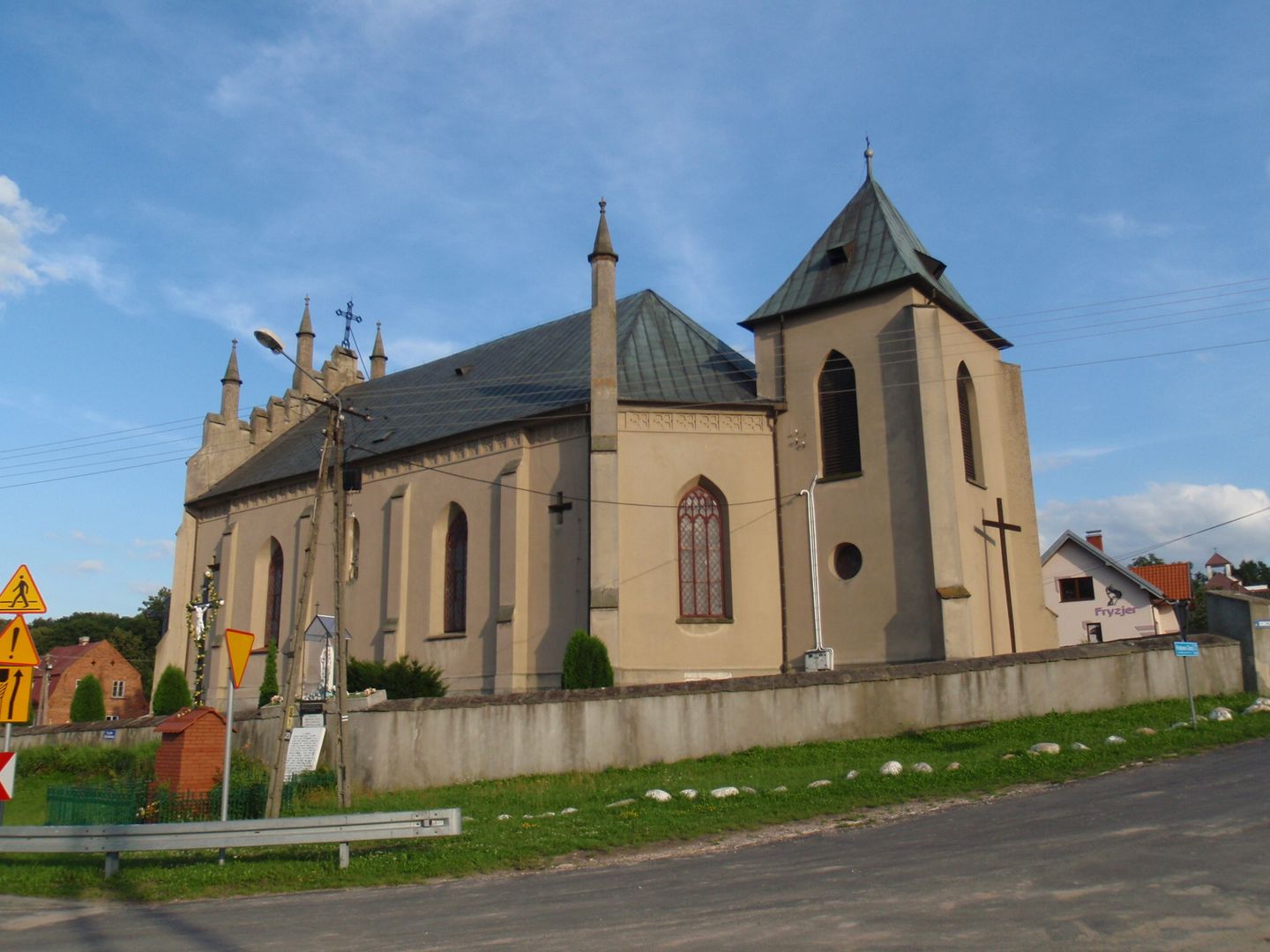Holy Cross Parish in Borkowice
6.16

Overview
The Parish of Borkowice, likely established in 1309, boasts a rich history dating back to the 14th century. The parish under the patronage of the Holy Cross was formally erected in 1365 when Bishop Bodzanta assigned eleven villages to it. Following its foundation, the first wooden church was built by Piotr Dunin Borkowski in 1360, although a manorial chapel had existed there earlier. A subsequent wooden church from 1722, funded by the Italian Jan Dziboni, was consecrated by Bishop Jan Kanty Lenczowski in 1793. In 1828, after its demolition, a third, temporary wooden church was erected, and between 1829 and 1845, a fourth, masonry church was founded. This church features a Neogothic exterior and a Late Baroque interior. Its construction was supported by Katarzyna and Antoni Małachowski and their son Onufry. The church has a richly decorated interior, including a 17th-century Baroque crucifix and notable altars with an image of Our Lady of Perpetual Help and a statue of St. Anthony of Padua, which is believed to have a miraculous origin from a lead discovery. Additionally, the church houses numerous Baroque sculptures, paintings, bells, and other historical artifacts. In 1846, the new church was consecrated by Bishop Józef Joachim Goldtman. Nearby stands a chapel from 1933, commemorating King John III Sobieski's victory over the Turks at Vienna. In 1939, the Missionary Benedictine Sisters arrived at the parish and established a shelter for children. In 1997, a new convent was built, which now houses a kindergarten. Among the parish priests were figures such as Fr. Antoni Gołębiowski and Fr. Canon Mieczysław Ośka. The Holy Cross Parish in Borkowice is one of the ten parishes in the Przysucha deanery of the Radom diocese, serving the residents of Borkowice, Bolęcin, Bryzgow, Ninków, Politów, Radestów, Rudno, Ruszkowice, Wymysłów, and Zdonków, making it a vital center of religious and cultural life in the region.
Location
You can also find here:
2025 Wizytor | All Rights Reserved
